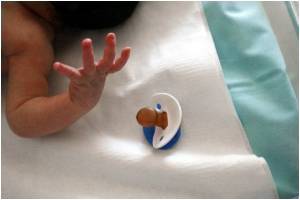An estimated 18 percent of pediatric patients in a University of North Carolina-based study were at-risk for sleep-related breathing disorders (SRBD).

The study included 100 children between seven and 17 years of age, of which 43 percent were male and 57 percent were female. The group was 73 percent Caucasian, 10 percent Hispanic, nine percent African American, five percent Asian, and two percent American Indian.
Researchers used a previously validated survey, the Pediatric Sleep Questionnaire (PSQ), to estimate the risk of SRBD. Each patient's parent or guardian completed the PSQ for his or her child. A score of 0.33 suggested risk for SRBD. Results indicated that 18 percent of the participants were at risk for sleep-disordered breathing.
Orthodontic records including information on craniofacial characteristics were obtained for each patient. The researchers looked for an association between risk for SRBD and craniofacial features. They also examined the effect of gender, race, age, and body mass index on SRBD risk. No significant associations were found for either demographic or craniofacial characteristics.
"We were surprised that our findings suggested that the risk for pediatric sleep disordered breathing was as high as it was, since our review of the literature suggested that the prevalence of pediatric obstructive sleep apnea was one to three percent. We speculate that either our sample size was too small, or that additional factors contribute to the condition in children," said principle investigator Kristen Fritz.
Early diagnosis of pediatric SRBD is critical because signs and symptoms often lead to misdiagnosis of sleep disorders as other clinical conditions such as attention deficit disorder or attention deficit hyperactivity disorder.
Advertisement
"Screening tools such as the PSQ, or specific inquiry about suspected risk factors such as snoring, sleepiness or behavioral problems, offer dentists who treat children an opportunity to recognize, educate and refer pediatric patients that may be at risk for SRBD," said Fritz.
Advertisement
Source-Eurekalert












